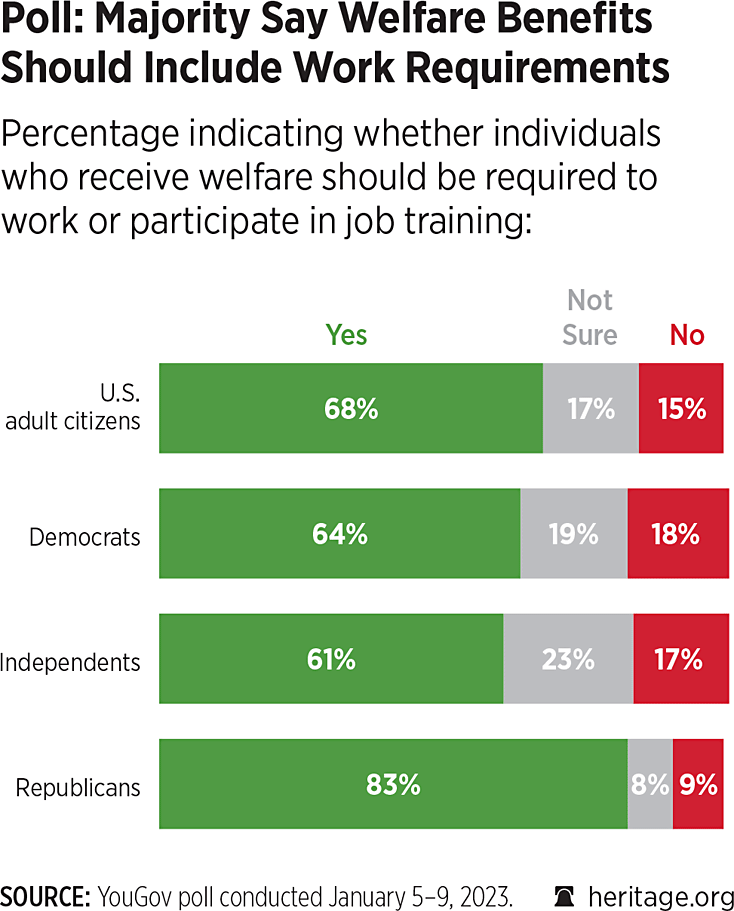The Issue
Expanding and strengthening work requirements across all welfare programs is a key step to reducing poverty, strengthening families, lessening long-term government dependence, and improving overall well-being.
Why Work Should Be Part of Welfare Programs
- Work requirements in welfare programs set the tone that aid should be given to those who need it, and that able-bodied adults should be required to look for or get a job as a condition for benefits.
- Most Americans believe that people should work in exchange for receiving benefits. A recent poll found that two-thirds of Americans believe that welfare recipients should have to work.
- Debate over work requirements in welfare programs should be about improving recipients’ overall well-being and less about cutting spending.
Designing a Fair and Effective Work Requirement
Work requirements should:
- Focus on work-capable adults. Any work requirement must, obviously, be restricted to non-elderly, able-bodied adults. Opponents wrongly argue that work requirements target the elderly, disabled, or children. Most means-tested programs enroll millions of adults who are able to work but do not.
- Require work or “work activation.” If a work-capable recipient cannot immediately find employment he or she should be required to engage in mandatory work activation. This can cover education, training, job preparation, community service work, and supervised job searches. Two-parent families would need only one parent to meet the work requirement.
- Limit state exemptions and loopholes. The federal government may establish work requirements on federal programs, but state governments often use loopholes to evade these requirements. Congress should eliminate anti-work waivers and loopholes.
Meaningful Work Leads to Better Outcomes
- Work requirements and mandatory work activation promote fairness. They automatically separate recipients who truly cannot find a job from those who choose not to work.
- By serving as a gate-keeping device, work requirements reduce unnecessary enrollments in welfare and spur more rapid exits. Historical evidence shows both factors are critical to reducing dependence.
- Leaving the labor force to obtain welfare leaves a gap in an individual’s job history that makes future employment more difficult, substantially reducing future earnings opportunities. While it is critical to provide assistance to those who truly need it, the government must avoid promoting harmful dependence among those who can find work.
- This is not just an employment issue. Welfare reform in the 1990s had a large impact on solid family formation. Reform dramatically reduced abortion, non-marital childbearing, and teen pregnancy. It also strengthened marriage and halted the decline of two-parent families.




